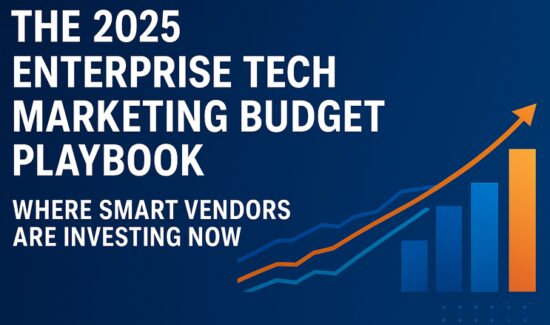GA4 One Year Later: A Marketer’s Insights and Learnings


Chris Todd, a Principal of Marketing Operations at CallTrackingMetrics, provides a one-year retrospective on the Google Analytics 4 (GA4) launch and shares his insights on how it’s changed marketing strategies. This article originally appeared in Insight Jam, an enterprise IT community that enables human conversation on AI.
 On July 1, 2023, a significant shift occurred in the world of website analytics. Google sunsetted its long-standing platform, Universal Analytics (UA), and debuted its next-generation platform, Google Analytics 4 (GA4), with advanced capabilities and a focus on user privacy. Though Google had been promoting GA4 for some time, the official sunsetting of UA spurred businesses to accelerate their migration to the new platform. But this wasn’t just a platform update but a fundamental change in how website user data is collected and analyzed.
On July 1, 2023, a significant shift occurred in the world of website analytics. Google sunsetted its long-standing platform, Universal Analytics (UA), and debuted its next-generation platform, Google Analytics 4 (GA4), with advanced capabilities and a focus on user privacy. Though Google had been promoting GA4 for some time, the official sunsetting of UA spurred businesses to accelerate their migration to the new platform. But this wasn’t just a platform update but a fundamental change in how website user data is collected and analyzed.
After a year of using GA4, marketers have gained valuable insights into its enhanced data-tracking capabilities, user-centric approach, and the challenges involved in transitioning platforms. GA4 allows marketers to understand their audience better, optimize campaigns for improved results, and stay ahead of the competition.
The Big Picture: Overall GA4 Takeaways
One of the most notable improvements resulting from the shift from UA to GA4 has been flexibility: charts are customizable, events can include significantly more parameters, and it’s easier to build visuals and analyze complex segments. This increased flexibility is not without its challenges, however. The myriad customizations available require a more thoughtful measurement strategy than was necessary with UA.
Though many of GA4’s insights are similar to those from UA, such as which pages are doing well and which sources drive the most traffic, marketers can dig deeper with GA4. Its event structure allows marketers to analyze a segment’s site behavior more closely, resulting in more thorough insights to inform campaigns.
GA4 is still a work in progress as Google adds improvements and updates, so marketers cannot “set it and forget it.” Some metrics aren’t yet available in reports, but they are available through Explorations. Though it may require setting aside some designated time to become better acquainted with the platform, marketers can get creative by learning how their audience interacts with their campaigns and websites.
The Nitty-Gritty: GA4’s Platform Improvements
Google designed GA4 to be the analytics software of the future by focusing on two key areas significantly limited in UA: machine learning (ML) and data visualization. Benefits of these new capabilities include:
- Improved predictive analytics. Since GA4 can predict future user behavior based on historical data and trends, businesses can better anticipate customer needs and personalize experiences proactively.
- Deeper insights. ML algorithms can analyze vast amounts of data to uncover hidden patterns and user journeys that traditional methods might miss. These insights empower businesses to make data-driven decisions and optimize their marketing strategies.
- Enhanced data visualization. GA4 offers richer data visualizations, making complex data sets easier to understand and allowing marketers to identify trends and patterns in user behavior.
- Streamlined data tracking. GA4 simplifies data tracking by replacing UA’s multiple disparate data views with a single data stream for all related properties. This provides a more holistic picture of visitor behavior across different touchpoints, including mobile devices, desktops, and apps.
Users switch between devices throughout their customer journey. GA4’s ability to track user behavior across these touchpoints offers a complete picture of a visitor’s online presence, allowing businesses to tailor their marketing strategies to address the specific needs of users at each stage of the journey.
However, the migration from UA to GA4 did have some hiccups. For example, comparing UA user metrics to GA4 user metrics created an “apples-to-oranges” situation; GA4’s primary metric is “active users,” measuring the number of distinct website or app visitors, while UA tracked total users. Since the calculations for these measurements differed, the comparisons were rife with discrepancies.
GA4’s Solutions to Legacy Issues and Privacy Concerns
The limitations of UA’s decade-old architecture presented challenges for scalability and adherence to evolving data privacy regulations like GDPR and CCPA. This spurred Google to encourage user migration to GA4, which offers several privacy-centric features:
- Default IP anonymization. GA4 anonymizes user IP addresses by default, enhancing user privacy.
- Shorter data storage. Data is stored for a shorter duration in GA4, minimizing the amount of user data retained.
- Enhanced data controls. GA4 gives users more control over their data, such as requesting deletion of personal information.
- Consent mode. GA4 operates in a consent mode, ensuring user data is collected only after obtaining explicit consent where required.
By prioritizing user control and anonymization, GA4 ensures compliance with evolving regulations while fostering trust with website visitors. This commitment to user privacy positions GA4 as a future-proof analytics platform that empowers businesses to gather valuable insights without compromising user trust. As data privacy continues to be a top priority, GA4’s focus on user control positions it as a worthwhile tool for businesses wanting to stay compliant and ethical in their data collection practices.
GA4 represents a paradigm shift in website analytics. By leveraging ML, advanced data visualization, and a focus on user privacy, GA4 empowers businesses to gain a deeper understanding of their audience, optimize user experiences, and stay ahead of the curve.





















